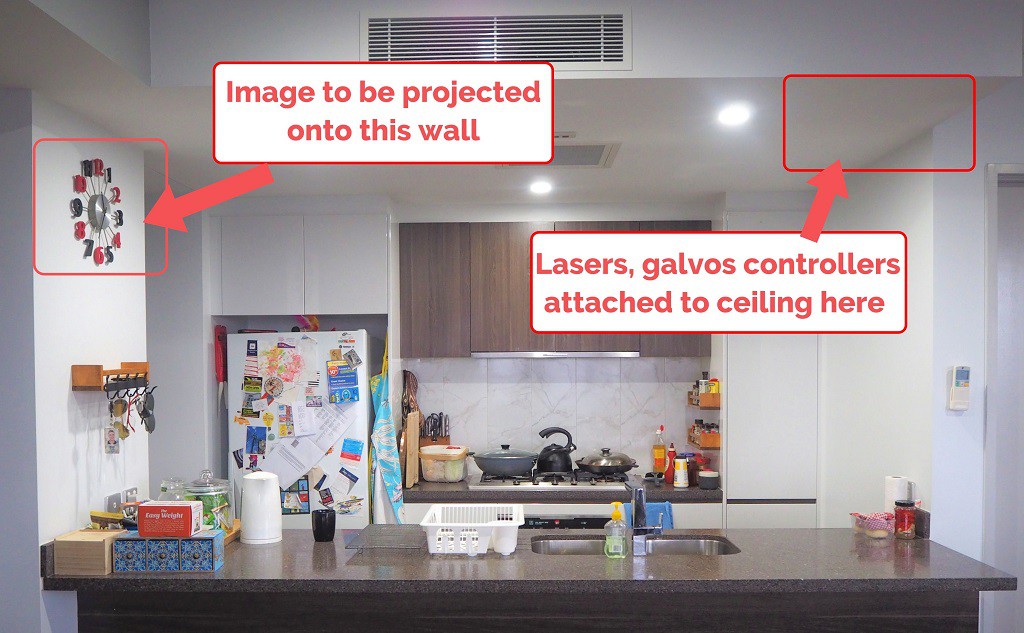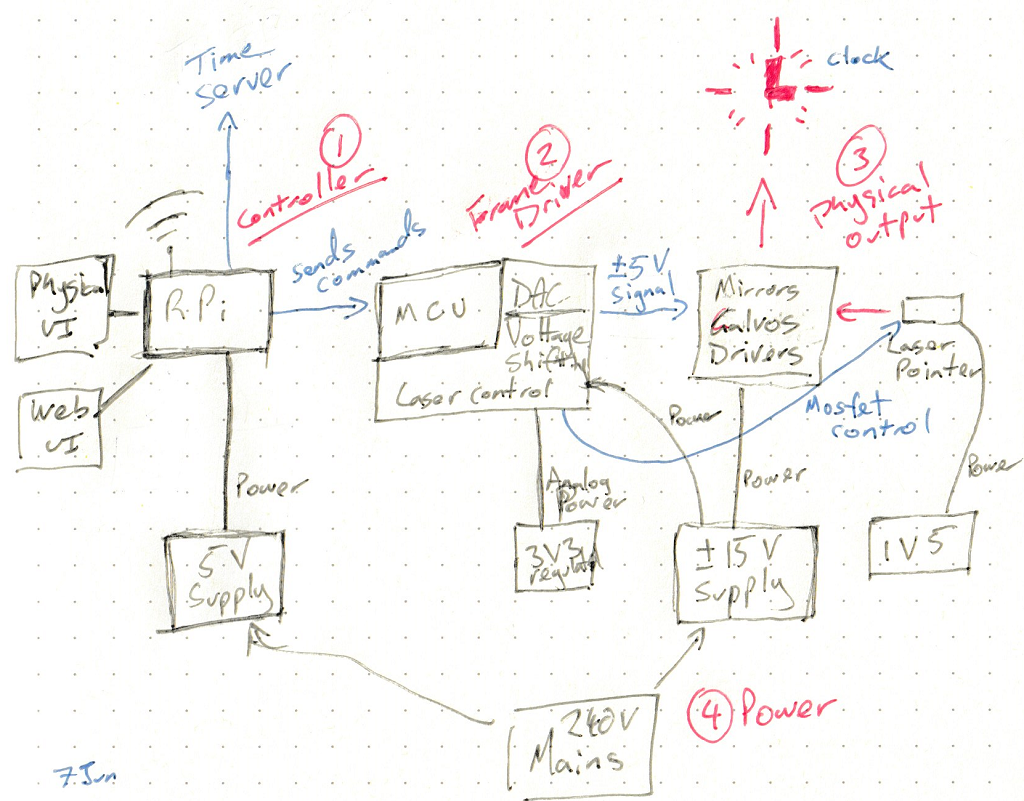
I want to replace our kitchen clock with one that glows in the dark. I was inspired by this instructable from DeltaFlo and encouraged by further write ups such as this one from Barton Dring and this one from Vulcaman.
Napkin Diagram

- I'm choosing Raspberry Pi for the controller. There are several other good options: Beaglebone might obviate the need for a separate MCU, ESP32 is cheap and in vogue right now. However, Raspberry Pi is well supported and has plenty of compute power.
- The Pi will have a physical and a web UI, accessible from the local LAN. The Pi will get its time from the internet.
- The Frame Driver draws the same thing over and over, until it's told to draw something different. It will be powered by a small microcontroller, and its output will be two ±5v differential signal.
- Complicated power supply. First, the Frame Driver's DAC will need a rock solid supply in order to accurately produce a signal for the mirror drivers. Second, that signal needs to be amplified from 3.3V to ±5v.
Questions To Answer
I will begin by addressing uncertainties:
- How good are the galvos and their drivers? What kind of accuracy can I expect in drawing?
- Do I need really to produce a ±5v signal, or is 0-10v good enough?
- What laser should I use? I want one that can operate continuously (for years, I hope!) show brightly and still be eye-safe.
- Where did I put that Raspberry Pi and its power supply?
 Alan Green
Alan Green
Discussions
Become a Hackaday.io Member
Create an account to leave a comment. Already have an account? Log In.
ESP32 can be developed using the familiar Arduino IDE due to excellent support by Expressif (all the familiar libraries are available, and then some) despite the huge difference in architecture and there are WROOM boards in Uno form factor so I wouldn't rule it out so early. You might be able to merge the Pi's functions into the MCU. See Peter Dalmaris's guide: https://techexplorations.com/guides/esp32/begin/module/
Are you sure? yes | no
Hi Ken: yes, I did a fair bit of thinking about ESP32 vs Raspberry Pi vs BeagleBone. I should write this up. Thank you for the pointer to the ESP32 guide.
Are you sure? yes | no